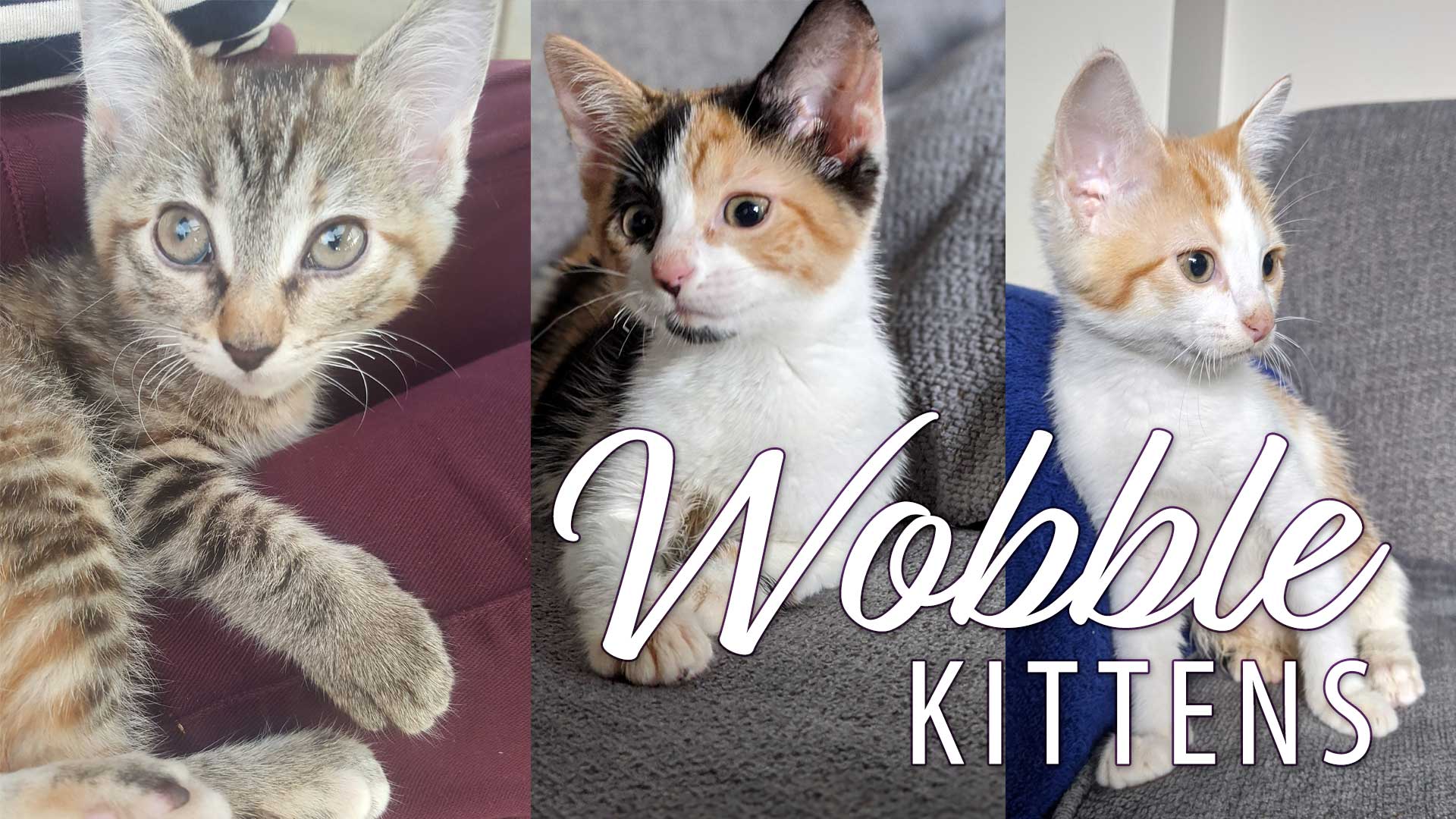
What is Cerebellar Hypoplasia? The Truth About Kittens with CH
Meet 12-week-old kittens Tsar, Tash, and Khiva, and slightly older Lucy–some of the latest fosters at A.R.F.-Animal Rescue Foundation. These adorable adoptable kittens each have cerebellar hypoplasia, also known as “CH,” or “wobbly cat syndrome.” But don’t panic–cerebellar hypoplasia is not as scary as it sounds. Just keep in mind these four essential facts about CH when considering cerebellar hypoplasia cats up for adoption:
- CH is not painful.
- CH is not contagious.
- CH is not a progressive condition (i.e. the condition doesn’t worsen over time).
- Cats with CH can live long, happy, and normal lives.
What is Feline Cerebellar Hypoplasia (CH)?
What causes cerebellar hypoplasia?
CH is commonly caused by a mother cat passing the feline panleukopenia virus to one or more of her unborn kittens in a litter. The virus can attack the cerebellum of the brain, hindering the unborn kitten’s brain development and causing cerebellar hypoplasia.
What are the symptoms of cerebellar hypoplasia?
CH affects the portion of the brain responsible for fine motor skills, balance, and coordination, and it becomes apparent when a kitten first starts to walk at 4-6 weeks. Thus, CH is also called “wobbly kitten syndrome” or “wobbly cat syndrome.” In a cat or kitten with CH, you might notice some of the following symptoms:
- Mild head tremors
- Intention tremors (when a kitty is getting ready to make a big movement like bending down to take a drink or pouncing on a toy)
- Hypermetria (a goose-like walk–like that one scene from Aristocats)
- Unsteady, jerky, or wobbly walking like adoptable CH kitten Lucy below.
Does wobbly kitten syndrome go away?
Since the condition is caused by prenatal brain development, the condition does not go away. However, your CH cat will be able to adapt to their condition as they grow and enjoy a normal life expectancy. Some vets do recommend physical therapy or hydrotherapy to build muscle strength and coordination.
How do you treat a cat with cerebellar hypoplasia?
CH can be mild, moderate, or severe, but regardless of a cat’s level of CH, there are a few easy things you can do as a cat parent to help your kitty live their best nine lives.
- Cats with CH should remain indoors. They are prone to losing their balance, and they would also have a harder time running away or defending themselves if they were attacked by another animal. If they got out of your yard and were sent to animal control, their condition could be incorrectly perceived as an injury and they might be euthanized.
- You should not declaw a cat with CH. Their claws help them grip, balance, and climb! In all honesty, no cats should be declawed, but declawing a cat with CH is especially cruel as it makes it harder for them to get around.
- Prevent injuries with a few furniture modifications. Many cats with CH are avid climbers, but they also tend to lose their balance and fall often. Add a baby gate, carpet, or individual carpet stair treads to stairs, and add net guards to banisters, balustrades, and balconies.
- Encourage exercise. Adding climbing aids like ramps up to window ledges will help keep your kitty happy as well as safe. Tucking a blanket or towel into a couch and draping it over the edge of the seat will help your cat climb onto the couch, and it will protect the upholstery. Play with your kitty to get them active.
If your cat’s CH is moderate or severe, they may need a little more help from you:
- Eating and Drinking: Raised dishes can help them access their food and water better. If they tend to rest their faces on their dishes while eating or drinking, softer silicone dishes will help prevent bruising.
- Litter boxes: Litter boxes with higher sides can help them support themselves while doing their business. They may do better with pellet litter or pee pads for less mess, or they may need a litter box that has a low entry point.
- Mobility: They may not be able to walk and prefer to climb or flop in order to propel themselves. Carpets and rugs help with mobility and balance, but they may need assistance getting to their food, water, or litter box in a timely manner. A cat wheelchair or CH cat walker could be a good option in some cases to help with mobility.
How can you prevent cerebellar hypoplasia?
While CH is not contagious, the panleukopenia virus that commonly causes CH in unborn kittens is. So the best way to prevent CH is to vaccinate female cats against panleukopenia prior to pregnancy….or just spay and neuter your pets!
Meet Our Adoptable CH Kittens
So, knowing what we know now about CH, how does it manifest in A.R.F.’s kitten fosters, Lucy, Tsar, Tash, and Khiva? What are they like, and what would be the best environment for each of them?
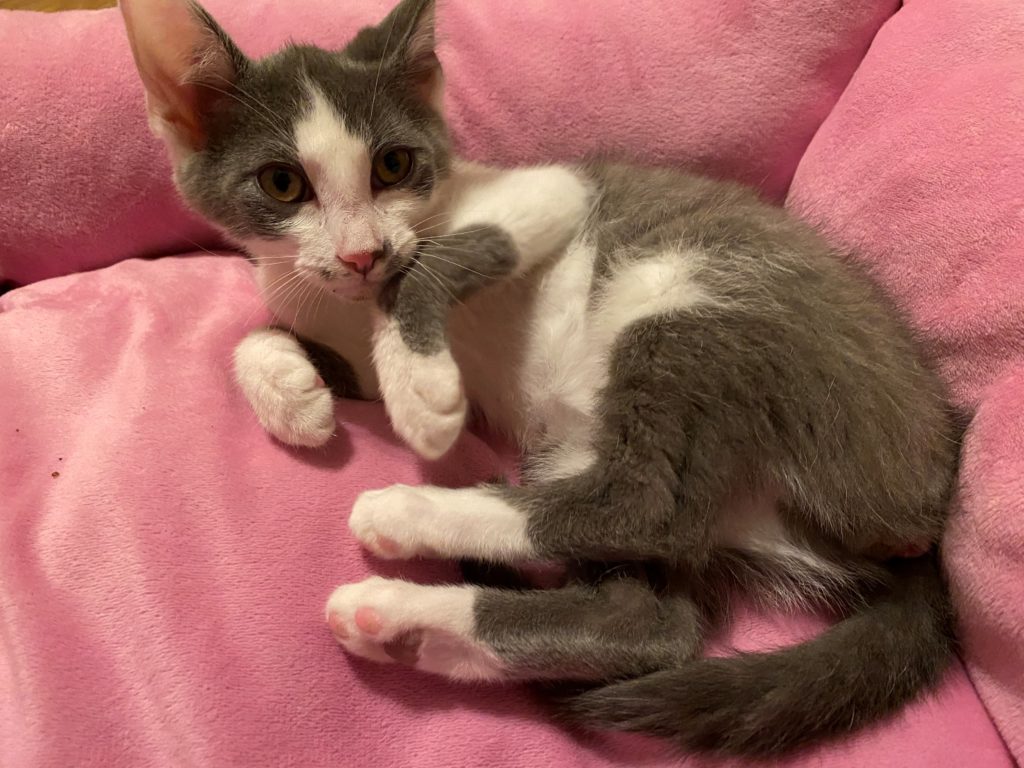
Lucy with the Shimmy Cat
Lucy is a sweet girl who is very friendly. Lucy does great with getting around and climbing up on cat trees if they are low enough for her. Her favorite toy is the catnip kicker, and she is a champion bunny kicker. Fun fact – she will never jump on your counters!
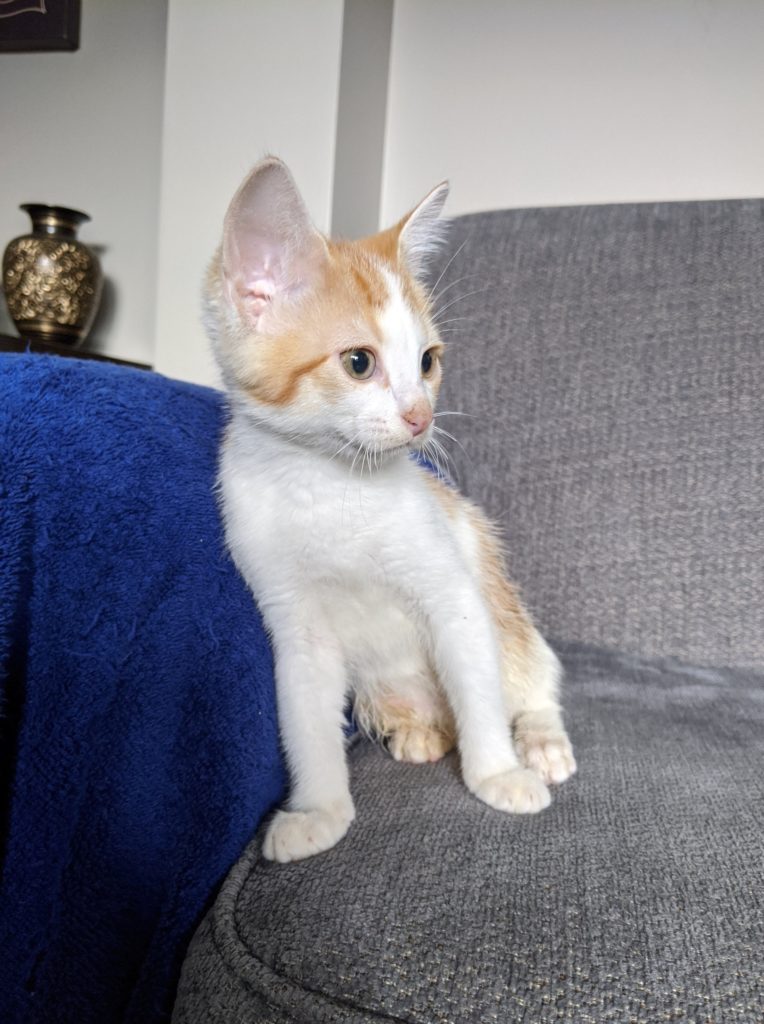
Tsar the Wobbly Kitten
Tsar is a male orange tabby. He loves cuddling, playing with his siblings and his cat wand toy, and chasing his own tail. He has mild-to-moderate CH, so he sometimes loses his balance and flops over, but he loves to scamper about and explore. He would do best in a home without other cats, and in a family with older children or no children.
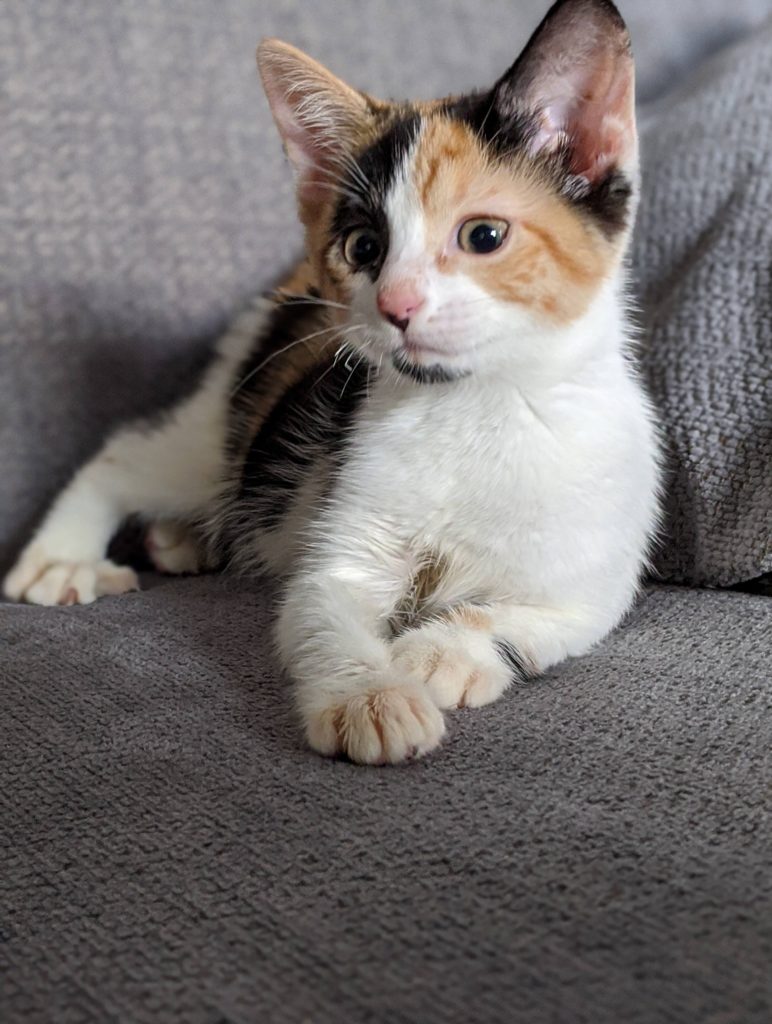
Khiva the Drunken Pirate Kitten
Khiva is a female calico with a sweet and goofy disposition. Her foster family calls her a drunken pirate, not only because of her wobbly gait but also because of the black “eyepatch” marking on her face. With moderate-to-severe CH, she has little control over her back legs, but is still fearless and loves to play and pounce. She also likes to get snuggles and under-the-chin scratches, and loves to be held like a baby. She would be great for any family up for the challenge of having a special needs pet.
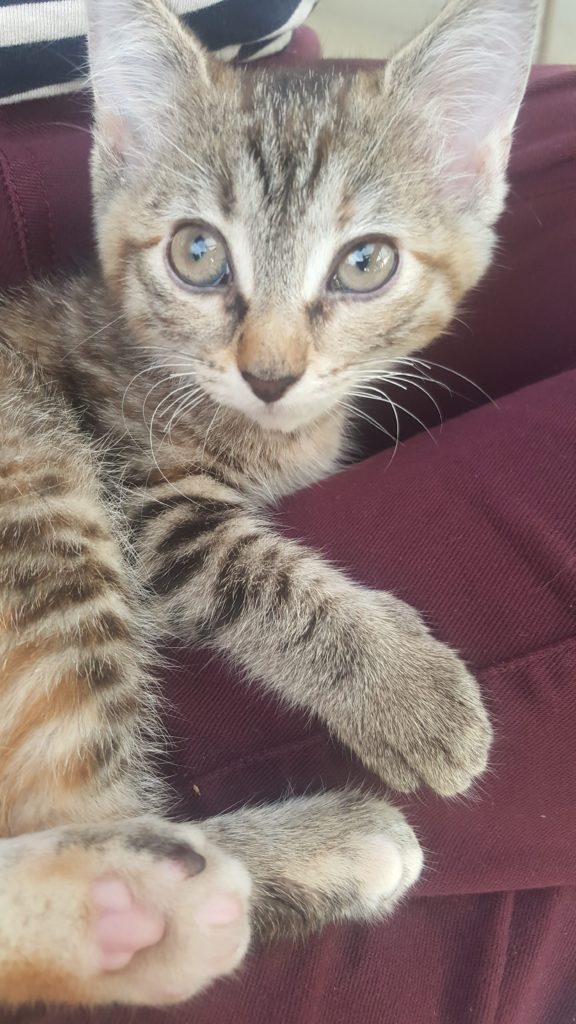
Tash the Tipsy Tabby Kitten
Tash a female grey tabby with striking golden eyes. She too loves chasing her own tail and has mild-to-moderate CH, so she can get around quite well. She likes to practice her wide-legged stance for balance, and loves to pounce. She would also do best in a home without other cats, and in a family with older children or no children.
All three 12-week-old kitten siblings are microchipped, up to date on their vaccines, and though too young to be spayed/neutered as CH kittens yet, they are ready to go to a loving home. None of them need special medical care, but an adapted litter box and adapted food/water bowls may be needed to help their independence. And, if you adopt one of these adorable kitties, you will receive a certificate for a free exam with one of our veterinary partners.
Feel free to contact A.R.F. in Wheaton if you have any questions, and check out some more helpful links below to learn more!
Learn more about cerebellar hypoplasia
Follow cats and dogs with CH on Instagram
- Phineas Tyrion Holly, an orange tabby
- Tippy Tuxies, three tuxedo cat siblings
- Boris & Morris, two brother cats known as @thetipsyboys
- Moby, a blind border collie mix with CH
- Hazel the Robodog
- Stevie the Wonderdog
Post written by: volunteer Katie Glaudell, freelance copywriter
